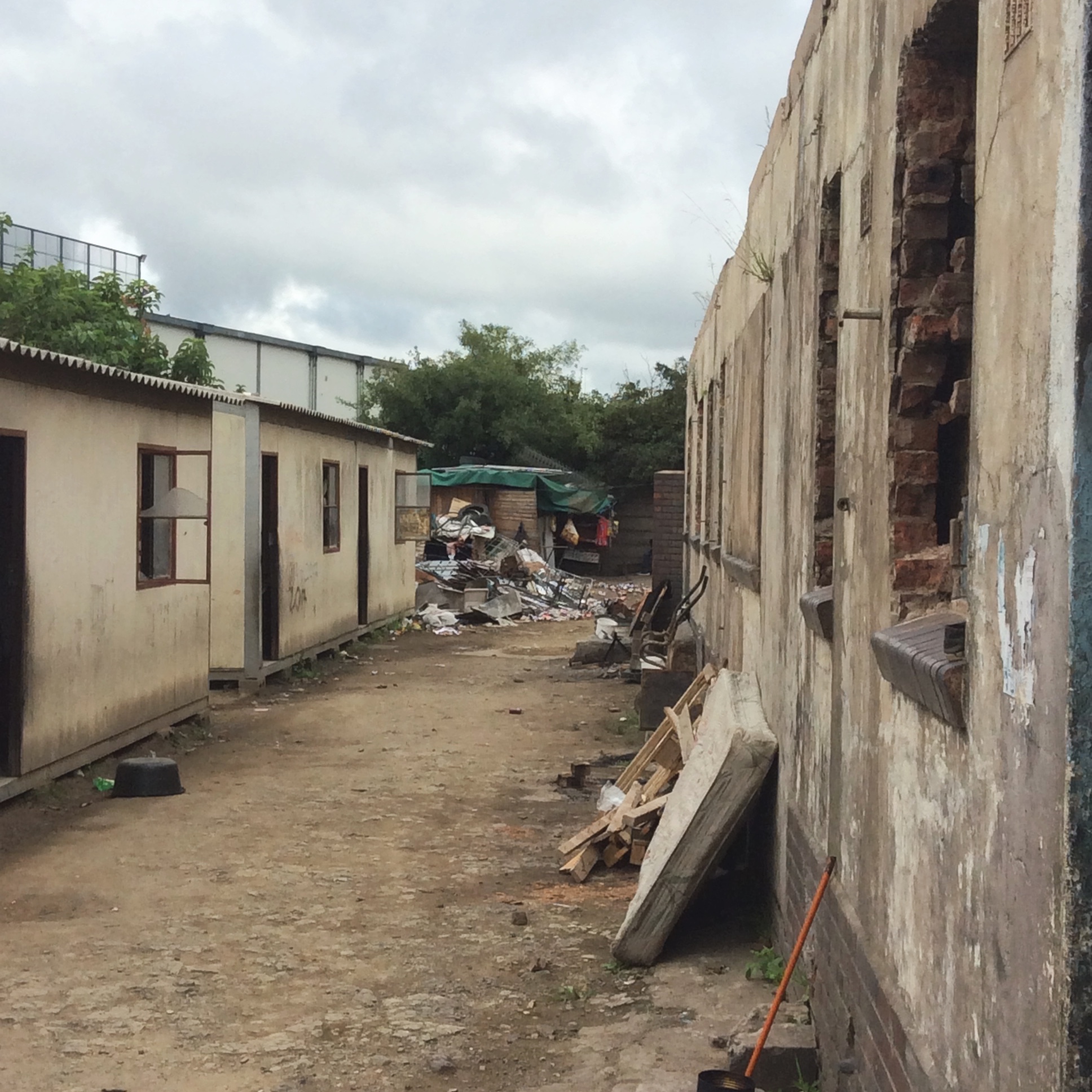WHERE WE SERVE
Gugulethu Township
GUGLETHU (CAPE TOWN REGION)
The Arm In Arm In Africa delegation has been engaged in Gugulethu, a township of some 360,000 residents near Cape Town, since our inception in 2000. We partner with the JL Zwane Center, a large Presbyterian Community which serves as a distribution point for our food parcels and houses the (Fun Learning for Youth) FLY mentoring program.
The roots of Gugulethu Township can be traced back to the migrant labor system during the apartheid era. The number of migrant workers from the Transkei region of the Eastern Cape had become too great for Langa Township to contain. ‘Gugs’ was established to provide for accommodation for the migrant workers who moved to Cape Town from the rural Transkei region in the Eastern Cape.
During apartheid, residents were allocated rooms in hostels designed in zones. In certain places, up to three men had to share a tiny room and had to live in extreme poverty in an overcrowded place.
Gugulethu Township is located on the Cape Flats and situated 18km south-east of Cape Town in the Western Cape Province. The name is Xhosa for ‘our pride’. The township was established in 1958 and was originally named Nyanga West.
Khayelitsha Township
Khayelitsha (CAPE TOWN REGION)
Located in the Cape Flats area of the Western Cape, Khayelitsha is the second-largest black township in South Africa (after Soweto) 30 kilometers east of Cape Town city center. It is home to two AIAIA partner organizations: St. Luke’s Hospice and the Missionaries of Charity.
In 1983, the apartheid government announced its decision to re-home legal black residents living in informal settlements on the Cape Peninsula to a new, purpose-built site called Khayelitsha. Ostensibly, the new township was created to provide those living in sub-standard squatter camps with improved formal housing; but in reality, Khayelitsha’s role was to give the government better control over the area’s impoverished black communities by grouping them together in one place.
The township, whose name means “new home” in Xhosa, is one of the poorest neighborhoods in the Cape Town area. Legal residents were classified as those that had lived on the Cape Peninsula for more than 10 years. Those that didn’t meet that criteria were considered illegal, and many were forcibly repatriated to the Transkei, one of several black homelands created during the apartheid regime.
Mitchells Plain
MITCHELLS PLAIN (CAPE TOWN REGION)
Mitchells Plain is a suburb about 32 km (20 mi) from the city of Cape Town. It is one of South Africa's largest suburbs. It is located on the Cape Flats on the False Bay coast between Muizenberg and Khayelitsha. Conceived of as a "model suburb" by the apartheid government, it was built during the 1970s to provide housing for Colored victims of forced removal due to the implementation of the Group Areas Act. At an estimated population of 290,000 - 305,000 people, it comprises a number of sub-sections which reflect the diverse class backgrounds of the population.
Barcelona Township
BARCELONA TOWNSHIP (CAPE TOWN REGION)
Barcelona is teeming township in the greater Cape Town region. Arm in Arm supports Tender Loving Care Orphanage with quarterly food parcels to help meal preparation for more than 30 children.
Malungeni
MALUNGENI (EASTERN CAPE)
Rev. Spiwo Xapile, a member of the Board of Directors of Arm in Arm in Africa, is a native of Malungeni. This rural area in the Eastern Cape of South Africa is challenged with limited employment opportunities, inadequate transportation and education. The resulting poverty makes it difficult for people to adequately feed their families.
Since 2000, AIAIA has supported Malungeni families with a quarterly food distribution program enabling the people to spend their resources on education, shelter, electricity and clothing. Each quarter the families are personally visited by Olga Ntombizanele Xapile, a community leader and member of Arm in Arm’s Board of Directors.
Residents determine who among them in most in need in any given distribution and Olga oversees delivery directly to that household.
This is the community’s way of looking after one another, giving to others when they have enough. While everyone in the area is in need, this generous spirit of giving and sharing with members of the community is heartwarming.
AIAIA began in 2000 with 15 families receiving food parcels. As of 2018, thanks to the generosity of Arm In Arm In Africa donors, the number of families receiving food parcels has grown to 225 families
Sowetho (Informal Settlement)
SOWETHO (EASTERN CAPE)
The informal settlement of Itipini is a community that faces major challenges on a daily basis. The 200 men, women, and children of Sowetho (Itipini) reside in extremely sub-standard housing, located in an environment that provides little, to no human services.
AIAIA established a relationship with this community a number of years ago, at a time in which they were actually living in a public garbage dump.
In 2012, the local government forced the community from their shacks and eliminated the only services that were available at that time, a small clinic and a day care. A small remnant of the community were relocated to the current 19 units government housing, where 200 people live in 38 units (two families per unit) directly beneath a power grid.
High unemployment, crime, insufficient food, lack of sanitation and water are a daily way of life for the former residents of the informal township of Sowetho.


















